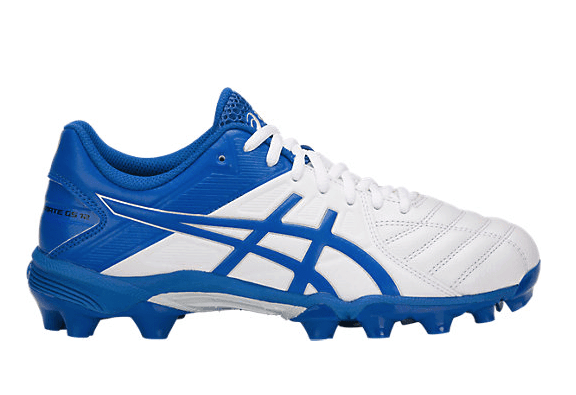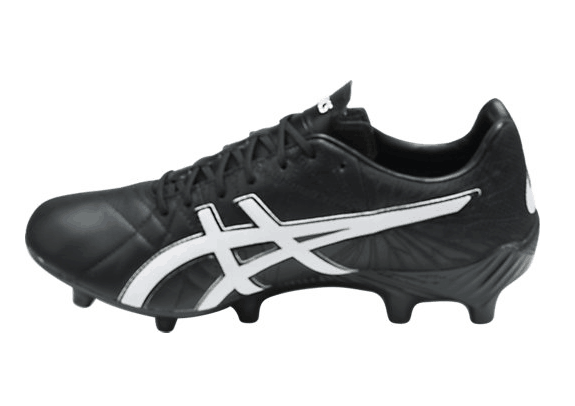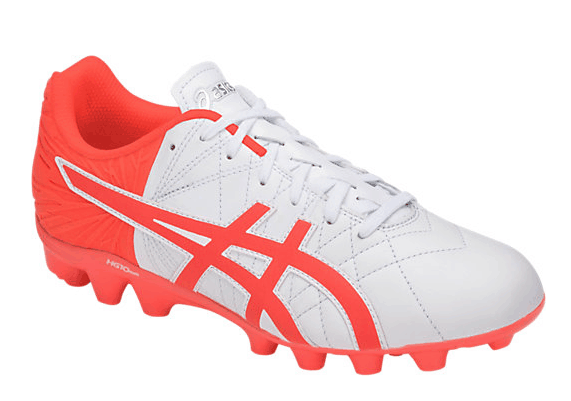
Your guide to choosing the right football boot

Your guide to choosing the right football boot
“Numerous sports people come to see me every year and apart from problems with foot or body posture, a big issue is wearing the wrong football boots for their feet,” says sports podiatrist and founder of A Step Ahead Foot + Ankle Care Dr Brenden Brown.
Common football foot injuries and how you can avoid them
Achilles tendonitis and Sever’s disease
“Most shoes are not flat, they’re higher at the heel than at the front. Yet, the majority of football boots on the market are perfectly flat.
“A combination of tight muscles (muscles that are overworking due to sport) plus wearing completely flat shoes—which is common in most footy boots but uncommon in your regular footwear—can lead to serious foot problems in adults and kids. Foot issues include pain in the arch of the foot and heel pain.”
Quick fix: To address some of the issues associated with flat shoes, most podiatrists can give you a heel raiser to pop in the back of the shoe. You can also look for a football boot with a raised heel.
Ankle strains
“Amongst other things, one of the keys to preventing ankle strains is to avoid shoes with a highly flexible shank (midsole),” says Dr Brenden.
“When selecting a football boot —or any shoe for that matter—hold the shoe with one hand on the back heel and the other hand on the toes and try to twist in opposite directions, as if you’re wringing the shoe out. If you can wring out the shoe easily (like a cloth), it’s a no, no.
“Good football boots won’t allow you to do this; they should have strength and support in the midsole section to control and stabilise your foot. This can help to protect against ankle strains.”
Shin splints
“Most football boots are designed with a flat foot bed, which can lead to many issues — one of which is shin splints. Shin splints are more common in people with flatter feet than in those with high arches and can be a result of poor choice of football boot or sudden increase in activity.”
Dr Brenden explains that the lack of cushioning puts excess pressure or force on the muscles, tendons and bone tissues surrounding the shin. This leads to inflammation and pain.
“Calf tightness is also a culprit!” he adds.
Quick fix: Stretch out those calves. Make sure to stretch both muscles. A quick internet search will throw up lots of great calf-stretching exercises.

A guide to choosing a great footy boot
“Footy boots are often designed for and around elite footballers and while a particular football boot might be fine for Beckham—it’s often not ideal for Bradley in the Under 13s!”
General Manager of product for ASICS Mark Doherty says, “In ASICS football boots we raise the heel by 10mm and that’s quite unique to ASICS; most footy boots are flatsole boots (or zero platform as we call it).
“The principle behind the 10mm heel is injury prevention; it raises the heel to take a bit of the strain of the muscles in the lower limb and hopefully it helps with some of the muscle overuse injuries that people get.”

ASICS Lethal Ultimate has a full midsole—on the fore foot and the rear. It also still has the 10mm heel raise. The idea behind the Ultimate is that it offers comfort and cushioning, so on really hard Aussie ground it gives the added protection that you don’t normally get from a soccer boot.
“The midsole also allows for a wider fit,” adds Mark.

“The Lethal Tigreor is a speed shoe. They look like any other football boot (from other brands) but they’re unique in that they have a midsole in the rear of the shoe, which gives the shoe that 10mm raise.
“Our boots are also unique in that they all have a removable sockliner. You can take the sockliner out and put an orthotic in without losing that all-important depth in the heel of the shoe.”
He says price will play a factor in determining the quality of the shoe. Shoes can vary from 100% synthetic upper to part synthetic, part leather through to full kangaroo leather (as is the case with ASICS Testimonial).

“The Tigreor Junior has a kangaroo toe box, which is unique and feels really good. Kangaroo is only 0.8 mm thick, whereas most synthetic or calf leather is 1.3mm thick. The thinner the material the better, as you get a greater feel of the ball. Kangaroo is thin but also very tough, making it ideal for football boots,” says Mark.
Key factors to consider when selecting a footy boot
- It needs a firm heel counter
- You shouldn’t be able to wring or twist the shoe
- A shoe shouldn’t bend in the middle
- It should be highly flexible in the toe area
- Most people will also benefit from having a slight heel raise
Other articles you might like:
Your guide to rock-solid ankle stability
10 things you should know about heel pain
Think you have a heel spur? Think again
A Step Ahead Foot + Ankle Care is one of Sydney’s leading foot and ankle clinics. Principal podiatrist and founder of A Step Ahead Dr Brenden Brown (AKA Dr Foot) has been taking care of people’s feet for more than 20 years.
With a background in sports medicine and having served as a former president of the Australasian Podiatry Council, Brenden is a wealth of information when it comes to foot and ankle care.




 Dr Brenden’s White paper report on the “6 Reasons You Won’t Beat Heal Pain” outlines what’s stopping you from beating this and tips on how to stop it in its tracks!
Dr Brenden’s White paper report on the “6 Reasons You Won’t Beat Heal Pain” outlines what’s stopping you from beating this and tips on how to stop it in its tracks!